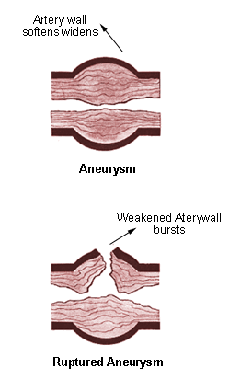Atherosclerosis, a form of arteriosclerosis is a condition where fatty deposits made up of cholesterol, other blood fats and calcium build up on the inner walls of the oxygen carrying blood vessels called arteries. This commonly happens in medium sized to large arteries and begins as early as the teen years or even during childhood in some people.
How it develops:
It is not entirely clear how this process happens. Current medical thinking is a small injury or irritation on the artery wall, caused by raised blood pressure, high fat levels and/or tobacco smoke attracts fats, cholesterol, calcium, cellular debris, fibrin, platelets, and other material circulating in the bloodstream to form a plug over the injury site. This then stimulates the artery wall to do some 'protective" thickening of its own, accumulating cells in the irritated area. This clump of cells attracts more fat and forms connective tissue between the cells. This is also known as plaque formation. The result is a hardened, thickened artery wall, which narrows the section through which blood must flow. If the area gets too thick, very little blood can flow through the artery. The narrowing also means any small blood clots in the blood stream can get stuck there and block the artery altogether. When this happens, the body tissues, muscles or organs depending on that artery for their oxygen supply may be damaged or even die.
Click here to look at figure 1.
If the artery supplies the heart, chest pain, a heart attack or even sudden death may result. If it happens in the brain, a stroke may occur. If the blockage is in the arteries leading to the kidneys, the kidneys may fail to work. A blockage in the legs can lead to pain in the calves when walking or running which goes away when the exercise stops.
The damage to the artery wall can also lead to softening and weakening of the wall structure, especially in the aorta (the large, powerful, artery leading from the heart to the rest of the body). As part of the artery gets wider and weaker (a condition known a an aneurysm), the weakness in the wall can lead it to burst suddenly. Sometimes a part of the plaque breaks off and travels up the artery until it gets stuck in a smaller vessel, blocking the blood flow there. This is known as an embolus and can lead to strokes, heart attacks and damage to any organ of the body. 
|